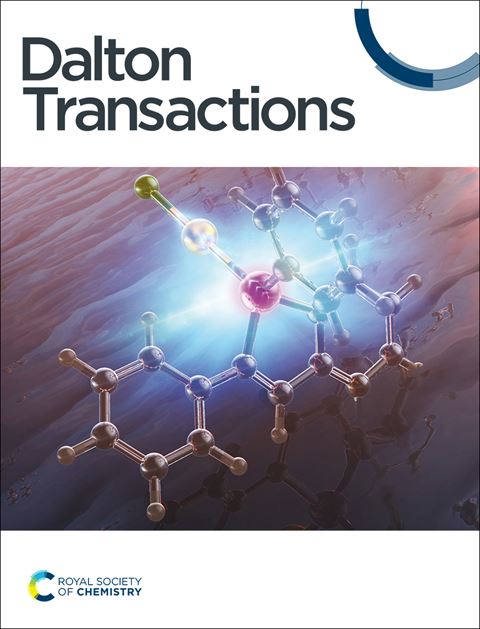Binding of potential antitumor Casiopeínas® with small proteins
IF 3.5
3区 化学
Q2 CHEMISTRY, INORGANIC & NUCLEAR
引用次数: 0
Abstract
Casiopeínas® are a family of patented CuII anticancer compounds. Cas II-gly and Cas VII-gly are formed by 4,7-dimethyl-1,10-phenanthroline (Me2phen) or 1,10-phenanthroline (phen), respectively, and the bidentate glycinato ligand (Gly), plus a nitrate anion acting as a counterion. In biological fluids, they can keep their identity or form mixed species and adducts with several bioligands, in particular with proteins. In this study, the binding of Cas II-gly, and Cas VII-gly for comparison, to small proteins like myoglobin (Mb), ubiquitin (Ub), and lysozyme (Lyz) was evaluated through combination of instrumental (ESI-MS and EPR) and computational (dockings) methods. Simulations of the peak signals in the ESI-MS spectra allow confirming the formation of the adducts. The results indicated that in all systems adducts with formula Protein–[CuII(Me2phen)]n with n = 1-3 are formed after the replacement of glycinato in the equatorial positions by side-chain donors. Dockings shows that the three proteins use different donor sets to bind the fragment CuII(Me2phen)2+: (NHis, NHis) or (NHis, COO–Asp/Glu) for Mb, NHis68 or (COO–Glu/Asp, COO–Glu/Asp) for Ub, (COO–Glu/Asp, CO) or only monodentate O donor for Lyz. The computational exploration of the protein structure reveals that more than one metal fragments can bind to the macromolecule. At the moment, it is not clear whether the formation of the adducts improves or worsens the action of Casiopeínas®. However, the obtained results suggest that, at the low copper concentrations found in the organism, the species Protein–[CuII(Me2phen)]n coexist with [CuII(Me2phen)(Gly)]+ and the fragment CuII(Me2phen)2+ which – in turn – could dissociate, at least partially, to Cu2+ ion and free ligand Me2phen. Therefore, a mixture of species could be responsible of the biological activity of Casiopeínas®.求助全文
约1分钟内获得全文
求助全文
来源期刊

Dalton Transactions
化学-无机化学与核化学
CiteScore
6.60
自引率
7.50%
发文量
1832
审稿时长
1.5 months
期刊介绍:
Dalton Transactions is a journal for all areas of inorganic chemistry, which encompasses the organometallic, bioinorganic and materials chemistry of the elements, with applications including synthesis, catalysis, energy conversion/storage, electrical devices and medicine. Dalton Transactions welcomes high-quality, original submissions in all of these areas and more, where the advancement of knowledge in inorganic chemistry is significant.
 求助内容:
求助内容: 应助结果提醒方式:
应助结果提醒方式:


